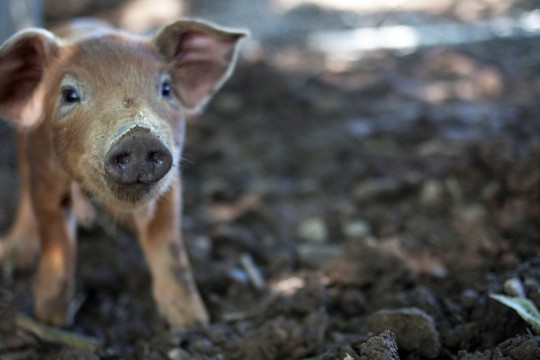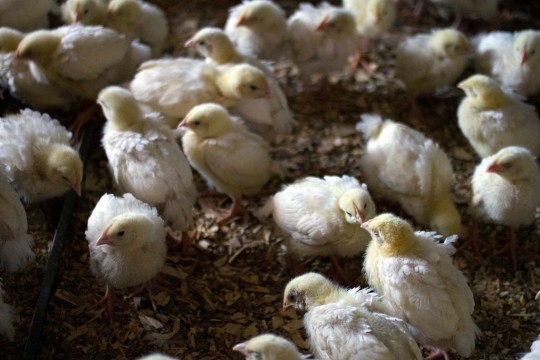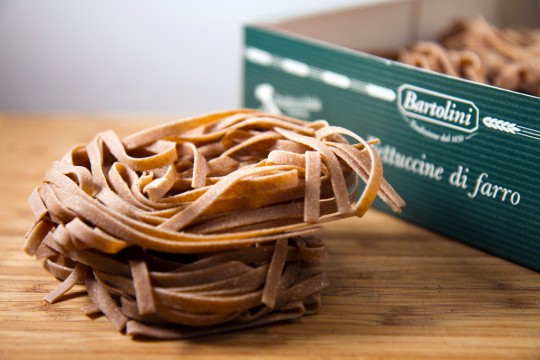
It’s been a long hot summer and I’ve been away from my husband and my home in Brooklyn for nearly five months. Fueled by raw goat milk and a regular supply of good meat, I’m stronger (and tanner) than I was when I arrived at the farm, and I’m closer to the food I eat than I’ve ever been before. There are hundreds of animals here that we raise for meat and they all depend on us for their livelihood. I move about my days alternatively caring for these animals and making food from them.
Last week I spent a morning gutting chickens, tried a new trussing technique for hanging salumi in the aging room and practiced cutting down a whole side of pork. I also castrated four piglets, which is an unpleasant but necessary task that I do here. We breed hogs to raise and eventually butcher for sausage, bacon, salumi or just good old pork chops for our CSA members. While these pigs are out on their own, rooting around and fattening up, we can’t just have them getting knocked up or else we’ll be slaughtering pregnant pigs.

Our sows, or mama pigs, live in their own area with a boar named Boris. Here they are encouraged to copulate, give birth to piglets and look after them. After a good amount of time in the pig nursery (as I like to think of the sow pen, one of my favorite places on the farm), we ween the teenage piglets and train them to respect electric fencing. Eventually they join the other adult pigs in the the woods where they spend their days eating, snoozing and generally being piggy until they grow to full weight.
Every other day we move the feeder pigs to fresh pasture. It’s a practice called rotational grazing and it’s how we raise our animals – it’s good for them and the land. This is a chore that involves tromping around in the woods, stomping in fence posts, reeling and unreeling the fence lines and ushering the pigs into their new area. I more or less live in muck boots, which makes it easy to not care about stepping in poop all the time. And when the pigs occasionally decide they’d like to go wallow in the creek or forage somewhere else, we might spend a morning chasing them down and herding them through the forest back to their temporary home.

I knew I wanted to butcher animals and connect more people to healthy, sustainable meat when I moved here. What I didn’t know is how much of a liking I would take to pig farming, or how much joy I would get watching piglets grow from fumbling little babies in search of their mother’s milk to mischievous little teenagers who sneak up to the farm house to eat pears that are falling from the big tree. And despite all of this, how I would grow to accept the death of these precious animals. For even without butchering and in spite of our constant efforts, mortality is a regular part in livestock farming.
I believe more than ever in the importance of the goals that brought me here and I guess you could say I’ve taken to this lifestyle that is now mine.






























